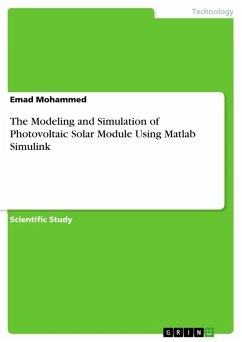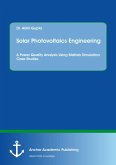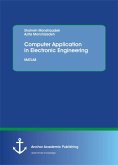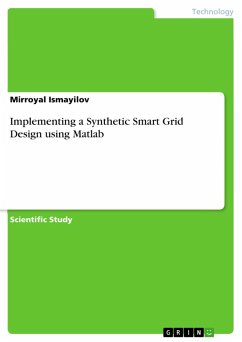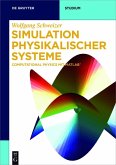Scientific Study from the year 2018 in the subject Engineering - Power Engineering, grade: 90, , language: English, abstract: This work is a detailed modeling and simulation of the PV cell and module. It is implemented under MATLAB/Simulink environment; the most used software by researchers and engineers. This model is first drafted in accordance with the fundamentals of semiconductors and the PV cell technology. In other words, the PV module parameters have been selected according to their variation with illumination and temperature. It means that for any type of PV module, one can use this model and determine all the necessary parameters under any new conditions of irradiance and temperature and then obtain the I(V) and P(V) characteristics. This model can be considered as a tool which can be used to study all types of PV modules available in markets, and especially their behavior under different weather data of standard test conditions (STC). The PV module is the interface which converts light into electricity. Modeling this device, necessarily requires taking weather data (irradiance and temperature) as input variables. The output can be current, voltage, power or other. However, trace the characteristics I(V) or P(V) needs of these three variables. Any change in the entries immediately implies changes in outputs. That is why, it is important to use an accurate model for the PV module. The well-known five-parameter model is selected for the present study, and solves using a novel combination technique which integrates an algebraic simultaneous calculation of the parameters at standard test conditions (STC) with an analytical determination of the parameters under real operating conditions. A monocrystalline solar module will be simulated using MATLAB/Simulink software at different ambient temperature and the output power of cell was recorded. Solar Radiation and its effect on power of module is also simulated. Simulation shows that the output power of solar cell get decreased with decrease in sun's radiation and raising temperature also decreases the output. In addition, the simulation performance of the model will be compared with other models, and further validated by outdoor tests, which indicate that the proposed model fits well the entire set of experimental field test I-V curves of the PV module, especially at the characteristic points.
Dieser Download kann aus rechtlichen Gründen nur mit Rechnungsadresse in A, B, BG, CY, CZ, D, DK, EW, E, FIN, F, GR, HR, H, IRL, I, LT, L, LR, M, NL, PL, P, R, S, SLO, SK ausgeliefert werden.

